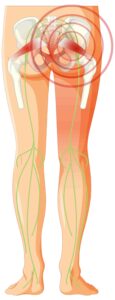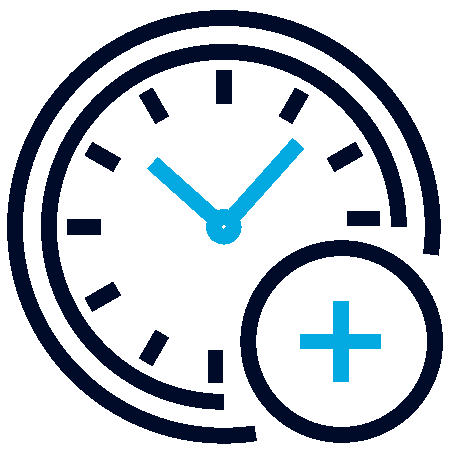Son güncelleme 3 November 2025 by ömer bozdurman
Sciatica is nerve pain radiating from the lower back down the legs, often caused by compression of the nerve. Learn causes, symptoms, and treatments.

Sciatica, one of the most debilitating forms of nerve pain, affects the sciatic nerve—the body’s longest nerve—causing sharp, shooting pain from the lower back through the hips, buttocks, and down the leg. Sciatica pain can be mild or severe sciatica pain that limits mobility, sleep, and daily activities. It typically affects one side but can be bilateral in rare cases. Sciatica causes include herniated disks, spinal stenosis, or piriformis syndrome compressing the sciatica nerve. Sciatica stretches like piriformis and hamstring stretches relieve pressure, while physical therapy for sciatica strengthens core muscles to prevent recurrence. Sciatica treatment ranges from conservative methods (medications, stretches for sciatica) to advanced interventions. In Turkey, sciatica treatment combines cutting-edge technology with affordable care. Early intervention prevents chronic issues. Dr. Ömer Bozduman, “Sciatica is not a disease but a warning; 70% of patients recover fully with proper sciatica treatment and sciatica stretches within 6 weeks.”
What Is Sciatica?
Sciatica is a symptom, not a diagnosis, characterized by pain along the sciatic nerve pathway. The sciatica nerve forms from five nerve roots (L4, L5, S1, S2, S3) in the lower spine, merging into a single nerve that exits the pelvis through the greater sciatic foramen, passes under the piriformis muscle, and travels down the posterior thigh, branching into the peroneal and tibial nerves at the knee. It innervates muscles in the hamstring, calf, and foot, and provides sensation to the back of the thigh, lower leg, and sole. Compression or irritation anywhere along this path triggers sciatica pain. Unlike general back pain, sciatica radiates below the knee and may include numbness, tingling, or weakness. Acute sciatica lasts 4-8 weeks; chronic sciatica persists beyond 12 weeks. Physical therapy for sciatica is the cornerstone of management, using sciatica stretches to mobilize the nerve and strengthen supporting structures. Sciatica is the body’s way of signaling spinal or pelvic imbalance; treating the root cause resolves 85% of cases without surgery.
How Common Is Sciatica?
Sciatica affects 10-40% of the population lifetime, with annual incidence of 5-10 per 1,000 adults. It peaks between ages 40-60 due to disk degeneration. Men are slightly more affected (1.5:1 ratio) from occupational lifting. In Turkey, sciatica treatment is among the top 5 orthopedic consultations, with over 500,000 cases yearly. Office workers (sedentary posture) and manual laborers (repetitive strain) are high-risk. Pregnancy increases risk to 50-80% in the third trimester due to weight gain (average 12-15 kg) and relaxin hormone loosening ligaments. Obesity (BMI >30) raises risk by 2-3 times via increased spinal load. Diabetes damages nerves, adding 20% risk. Recurrence is 25-30% within 1 year if core strength is neglected. Sciatica stretches and ergonomic education reduce recurrence by 60%.
What Are The Symptoms Of Sciatica?
Sciatica symptoms are distinctive and follow the sciatica nerve distribution:
Pain: Sharp, burning, electric-shock-like sciatica pain from lower back to foot. Worsens with sitting (>20 min), bending, coughing, or sneezing (Valsalva maneuver).
Radiation: Below knee to calf/foot (L5/S1 dermatome).
Numbness/Tingling: “Pins and needles” in leg/foot.
Weakness: Foot drop (can’t lift toes), difficulty pushing off when walking.
One-Sided: 95% unilateral; bilateral suggests central stenosis.
Severity: Mild (annoying) to severe sciatica pain (bedridden).
Red Flags: Saddle anesthesia, bowel/bladder dysfunction (cauda equina – emergency). Symptoms vary by root: L4 (thigh pain), L5 (big toe weakness), S1 (calf pain, Achilles reflex loss). Sciatica stretches provide immediate relief by reducing nerve tension.
What Causes Sciatica?
Sciatica causes involve mechanical compression or chemical irritation of nerve roots:
Herniated Disk (70-90%): Nucleus pulposus protrudes, pressing L4-S1 roots. Most common in 30-50 age group. Spinal Stenosis (10-20%): Narrowed canal in >60 years, bone spurs (osteophytes). Piriformis Syndrome (5-10%): Muscle spasm traps sciatica nerve in pelvis. Common in runners. Spondylolisthesis: Vertebra slips (grade 1-4), pinching nerve. Pregnancy: Uterus pressure, lordosis change. Trauma: Fractures, hematomas. Tumors/Infections: Rare (<1%), but serious. Sciatica causes are confirmed by MRI (gold standard). Physical therapy for sciatica addresses all by decompression and stabilization.
Where Is Sciatica Pain
Sciatica pain follows dermatomes: L4: Anterior thigh, inner lower leg. L5: Buttock, lateral thigh, dorsum of foot, big toe. S1: Buttock, posterior thigh, calf, heel, sole. Pain is sharp in leg, dull/aching in back. Severe sciatica pain feels like “hot poker” down the leg. Location guides diagnosis: buttock-only pain may be piriformis, foot drop suggests L5. Sciatica stretches target the entire path.
What Are The Risk Factors For Sciatica?
Sciatica risk factors are modifiable and non-modifiable:
Non-Modifiable: Age (disk degeneration), genetics (familial disk disease), height (>180 cm increases load).
Modifiable:
Obesity: Each 10 kg adds 40 kg spinal pressure. Sedentary Job: Sitting >6 hours/day weakens core. Heavy Lifting: Improper technique strains L5-S1. Smoking: Reduces disk nutrition, accelerates degeneration. Poor Posture: Forward head, rounded shoulders. Diabetes: Neuropathy risk. Prevention: Lose 5-10% body weight, daily sciatica stretches, ergonomic chair.
How Is Sciatica Diagnosed?
Sciatica diagnosis is clinical + imaging:
History: Pain radiation, duration, aggravating factors.
Physical Exam: Straight Leg Raise (SLR): Positive 30-70° (sensitivity 91%). Crossed SLR: High specificity for disk herniation. Reflexes: Absent Achilles (S1). Motor: Weak toe walk (L5). Sensory: Dermatome mapping.
Imaging:
X-ray: Rules out fracture, spondylolisthesis. MRI: Gold standard for disk, stenosis (98% accuracy). CT: Bone detail if MRI contraindicated.
EMG/NCS: Confirms nerve damage if weakness >3 weeks. Blood tests (CRP, ESR) for infection/inflammation.
How Is Sciatica Treated?
Sciatica treatment is stepwise, 90% conservative:
Self-Care (1-2 weeks): Rest, ice/heat, OTC NSAIDs.
Medications:
NSAIDs (ibuprofen 600 mg TID). Muscle relaxants (cyclobenzaprine). Neuropathic (gabapentin for burning pain). Short-term opioids for severe sciatica pain.
Physical Therapy for Sciatica (4-6 weeks):
Sciatica Stretches: Piriformis, hamstring, cat-cow. Core Stabilization: Plank, bird-dog. McKenzie Method: Extension exercises for disk retraction. Manual Therapy: Spinal mobilization. Injections: Epidural steroid (60-70% relief, 3-6 months). Alternative: Acupuncture (50% pain reduction), yoga.
Surgery (<5%): Microdiscectomy if failed 6-12 weeks conservative or red flags. Success 90%, recurrence 5-10%.
How Soon After Treatment Will I Feel Better?
Recovery timeline:
Self-Care: 20-30% better in 1 week. Physical Therapy for Sciatica: 50% in 2 weeks, 80% in 6 weeks. Injections: Relief in 3-7 days, peaks 2 weeks.
Surgery: Pain gone in 1-2 weeks, full recovery 6-12 weeks. Sciatica stretches provide daily incremental relief.
Sciatica Treatment In Turkey
Sciatica treatment in Turkey is world-class and cost-effective.
Advanced Diagnostics: 3T MRI, digital EMG.
Non-Surgical: ESWT for piriformis syndrome. PRP for disk healing. Ozone discolysis.
Minimally Invasive Surgery: Endoscopic discectomy (1-day stay, 95% success).
Physical Therapy for Sciatica: Hydrotherapy pools, robotic Lokomat, anti-gravity treadmills.
What Are The Complications Of Sciatica?
Untreated sciatica complications:
Chronic Pain: >3 months, 10-15% cases. Permanent Nerve Damage: Foot drop, sensory loss. Cauda Equina Syndrome: <1%, but paralysis risk. Muscle Atrophy: 20-30% strength loss in 3 months.
Psychological: Depression, anxiety from mobility loss. Sciatica stretches prevent 70% of complications. Dr. Ömer Bozduman warns, “Chronic sciatica turns treatable pain into disability; act within 6 weeks.”
Is Sciatica Preventable?
Sciatica is 70-80% preventable:
Core Strength: Plank, bridges 3x/week. Proper Lifting: Bend knees, keep load close. Ergonomics: Screen at eye level, lumbar support. Weight Management: BMI <25. Sciatica Stretches: Daily 10-min routine. Smoking Cessation: Improves disk health.
Regular Check-ups: For high-risk jobs. Dr. Ömer Bozduman advises, “Prevention is cheaper than sciatica treatment; start sciatica stretches today.”
How Long Does Sciatica Last
Sciatica duration depends on cause and treatment:
Acute (disk irritation): 4-6 weeks (80% resolve).
Subacute: 6-12 weeks.
Chronic: >12 weeks (10-15%). With physical therapy for sciatica: 50% better in 2 weeks, 90% in 6 weeks. Surgery: pain gone in days, full recovery 3 months. Sciatica stretches shorten duration by 40%.
How To Sleep With Sciatica
Optimal sleep positions for sciatica:
Fetal Position: Knees to chest, pillow between legs (aligns spine). Back Sleeping: Pillow under knees (reduces lumbar extension). Side Sleeping: Pillow between knees, hug pillow. Avoid Stomach Sleeping: Increases lordosis. Mattress: Medium-firm (supports natural curves). Pre-Bed Routine: Sciatica stretches (knee-to-chest 5 min), warm shower. Pain Management: TENS unit or ice pack 20 min before bed.
Exercises For Sciatica
Exercises for sciatica are evidence-based and target nerve decompression, core stability, and flexibility. Perform 2-3x/day, stop if pain worsens >2 points on VAS.
Piriformis Stretch (for piriformis syndrome): Sit, cross ankle over opposite knee, lean forward – 30 sec, 3 reps/side. Relieves sciatica nerve compression in pelvis.
Knee-to-Chest Stretch (disk decompression): Lie on back, pull one knee to chest, hold ankle – 30 sec, alternate. Classic stretches for sciatica.
Cat-Cow Yoga Pose (spinal mobility): On all fours, arch back (cat), dip (cow) – 10 cycles. Improves lumbar flexibility.
Bird-Dog (core stability): On all fours, extend opposite arm/leg, hold 10 sec – 5 reps/side. Prevents recurrence.
Glute Bridge (glute/hamstring strength): Lie on back, lift hips, squeeze glutes – 15 reps. Supports lower back.
Seated Hamstring Stretch (nerve glide): Sit, extend one leg, reach for toes – 30 sec/side. Reduces sciatica nerve tension.
Sciatic Nerve Floss/Glide (nerve mobilization): Sit, straighten leg, flex/extend foot – 10 reps. “Flosses” nerve through tunnel.
Cobra Pose (McKenzie extension): Lie prone, push up with arms, hips down – 10 sec, 5 reps. Centralizes disk pain.
Figure-4 Stretch (hip opener): Lie on back, cross ankle over knee, pull thigh – 30 sec. Targets piriformis.
Child’s Pose (overall relaxation): Kneel, sit on heels, reach arms forward – 1 min. Reduces spinal pressure.



